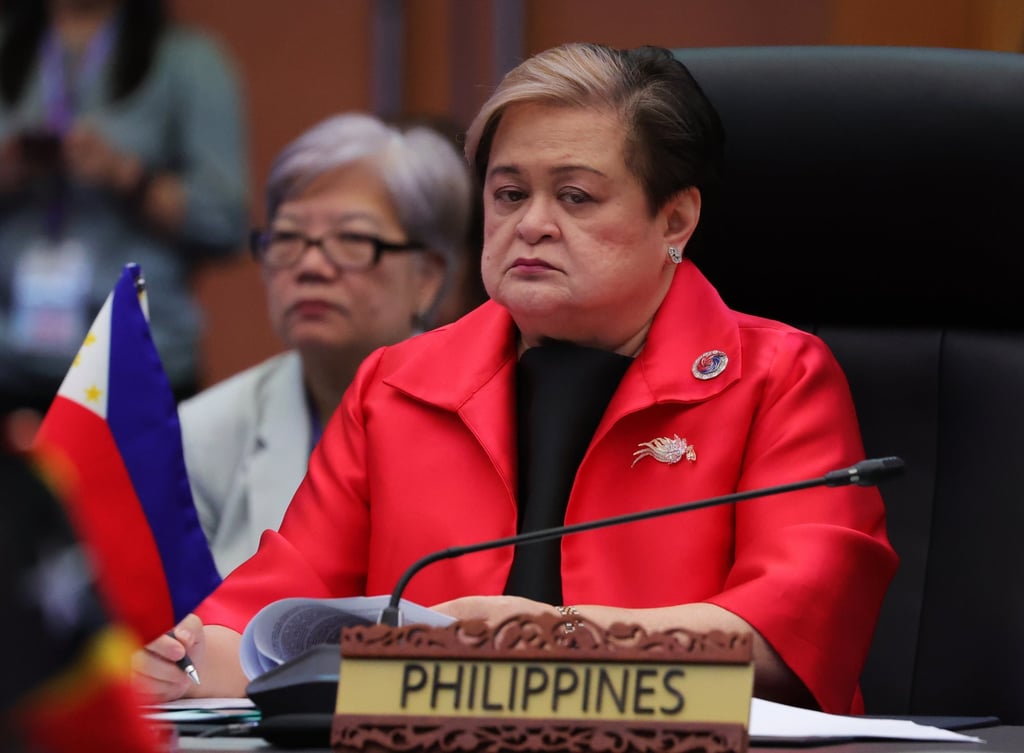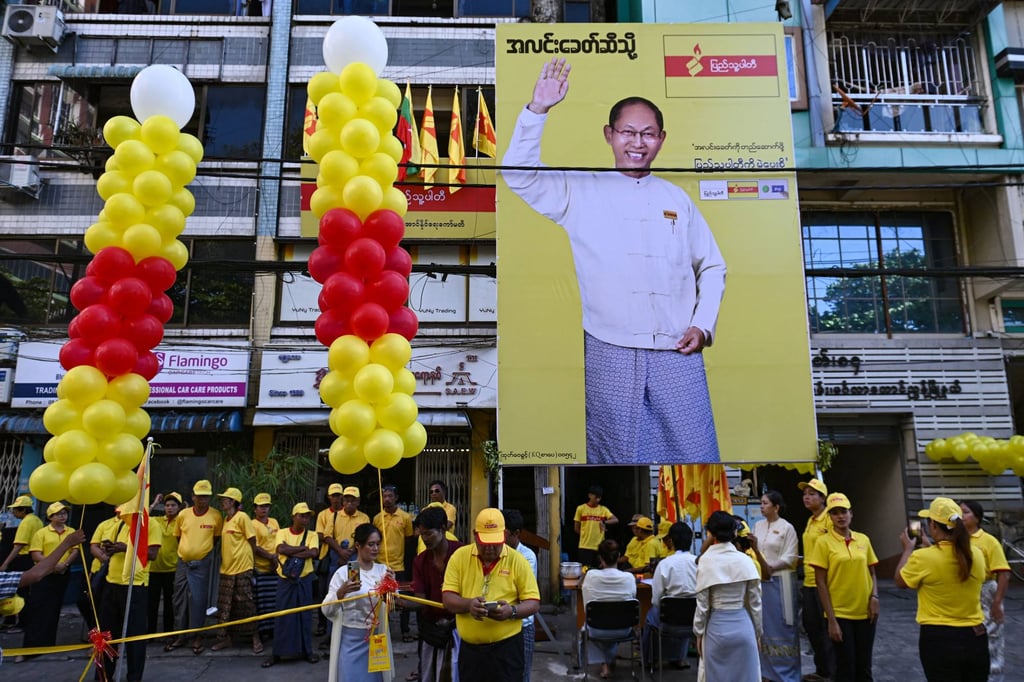As the Philippines prepares to take over the rotating Asean chairmanship next year, Manila faces the daunting task of managing a protracted civil war in Myanmar while pushing for progress on a long-delayed code of conduct (COC) in the South China Sea.
Analysts say Manila must navigate an Asean agenda crowded with difficult trade-offs, balancing the crisis in Myanmar where progress is expected to remain incremental with a COC process facing a 2026 deadline, even as internal divisions within the bloc threaten to complicate both priorities.
Foreign Secretary Maria Theresa Lazaro confirmed that the Philippines would prioritise continuity on Myanmar when it assumed the chairmanship from Malaysia, which currently leads the Association of Southeast Asian Nations.
“Malaysia had about 117 engagements, and we are of the view that we cannot do everything that was done by Malaysia, or even the past chairs,” Lazaro told reporters on November 17, stressing that Manila’s approach would be to build on established initiatives.
Lazaro’s statements came days after her appointment by President Ferdinand Marcos Jnr as the Philippines’ special envoy of the chair to Myanmar during the country’s Asean chairmanship in 2026.
Marcos Jnr said he was confident that Lazaro would bring a “constructive, principled, and inclusive approach” to supporting the people of Myanmar as guided by the Asean Five-Point Consensus, the road map to peace adopted by Asean leaders in 2021 following the military junta’s occupation.
According to Lazaro, Malaysia will continue to oversee some working group meetings, with the Philippines taking up the Myanmar issue in January when Asean’s foreign ministers convene to shape the bloc’s next steps.

Crisis and continuity
Analysts say Manila’s continuity-driven approach would be shaped by the sheer complexity of the Myanmar crisis, where four years of conflict and diplomatic deadlock have left Asean with limited room to manoeuvre and little expectation of breakthroughs during the Philippines’ chairmanship.
Those constraints stem from the scale of Myanmar’s civil war. Since the country’s generals overthrew the elected government in 2021, more than 7,000 people have been killed, 30,000 imprisoned and hundreds of thousands displaced.
However, the military currently controls less than half of the country, even as critics continue to accuse the junta-led government of widespread human rights abuses.
Moe Thuzar, who coordinates the Myanmar Studies Programme at Singapore’s ISEAS – Yusof Ishak Institute, said the Philippines’ emphasis on continuity was likely to include “upholding Asean’s collective decisions on Myanmar since 2021, the current modalities for regional diplomacy engaging with all relevant stakeholders, and prioritising humanitarian assistance without discrimination”.
That includes a recent decision not to send Asean observers to Myanmar’s general election, expected between December and January, a move reflecting the bloc’s scepticism over the polls’ credibility.
At the 47th Asean summit in October, the bloc reaffirmed the Five-Point Consensus as its “main reference” for resolving Myanmar’s crisis and called for its full implementation to achieve a “durable peaceful resolution”.
Joanne Lin, senior fellow at the ISEAS – Yusof Ishak Institute’s Asean Studies Centre, cautioned that Manila was unlikely to achieve any breakthroughs on the Myanmar crisis during its chairmanship.
However, she said the Philippines could add value “by preserving Asean consistency, keeping pressure on the regime through non-recognition of the elections and pushing for incremental but tangible humanitarian and violence-reduction measures”.

Lin said Manila’s immediate priority would be to coordinate an Asean response to Myanmar’s election next month and ensure “the grouping does not confer legitimacy on the process”, while maintaining restrictions on the junta’s high-level participation.
But she warned that consensus could prove elusive. Some member states with close ties to the Myanmar military or strategic interests aligned with China might favour “a more accommodating stance”, she said.
“Manila will need to balance these internal pressures while keeping Asean aligned with its own established position and the credibility of the [Five-Point Consensus],” she said, urging early contingency planning for a potential post-election crackdown on ethnic armed groups and opposition forces.
She said the crisis was unlikely to define Manila’s chairmanship, “but it cannot be downplayed, especially with elections looming and the risk of post-election escalation”.
Meanwhile, Thuzar said the Philippines was likely to continue discussions begun under Malaysia on creating a more permanent Asean special envoy role.
Lin shared this view, noting that a longer-term envoy would avoid the yearly reset and strengthen institutional memory when engaging stakeholders, helping sustain continuity in Asean’s diplomacy on Myanmar.
She added that the proposed troika mechanism – bringing together past, current and incoming chairs during crises – had not gained real traction within the bloc.
“Manila would benefit from working more systematically with Malaysia as the previous chair and Singapore as the incoming one to share assessments and coordinating humanitarian access strategies,” she said.

Crowded agenda
Beyond Myanmar and the South China Sea, Manila is expected to spearhead the early implementation of the Asean Community Vision 2045 – a strategic blueprint adopted in May to guide the bloc’s development over the next two decades.
That will unfold in the context of intensifying US-China rivalry, shifts in global trade such as Washington’s tariff recalibrations, and simmering border tensions between Thailand and Cambodia.
“Added to this are ongoing priorities in economic security, digital governance, climate resilience and connectivity, which is already packed even before Manila adds its own chairmanship initiatives,” Lin said, adding that Myanmar would “remain a core but highly constrained part”.
Lin said the COC would inevitably be the Philippines’ priority in 2026, driven not only by its own security concerns but also by Asean’s tight timeline to conclude negotiations by 2026 under guidelines adopted during Indonesia’s 2023 chairmanship.
The long-delayed pact is meant to establish legally binding rules to manage maritime incidents and prevent clashes in the South China Sea, where competing territorial claims and increasingly assertive patrols have heightened the risk of miscalculation.
Lin said the COC’s 2026 deadline “places far greater time pressure” on Manila to deliver results compared to the Myanmar crisis.
“Still, this does not mean Myanmar will be sidelined,” she said. “Instead, the two issues will be handled on different tracks. The COC through high-visibility, chair-driven diplomacy, while Myanmar through continuity-focused efforts that are aligned with the [Five-Point Consensus].”
Thuzar said the Myanmar crisis and the South China Sea code of conduct “present different aspects of Asean’s external and internal centrality, and the Philippine leadership is aware of the attention required for both questions”.
